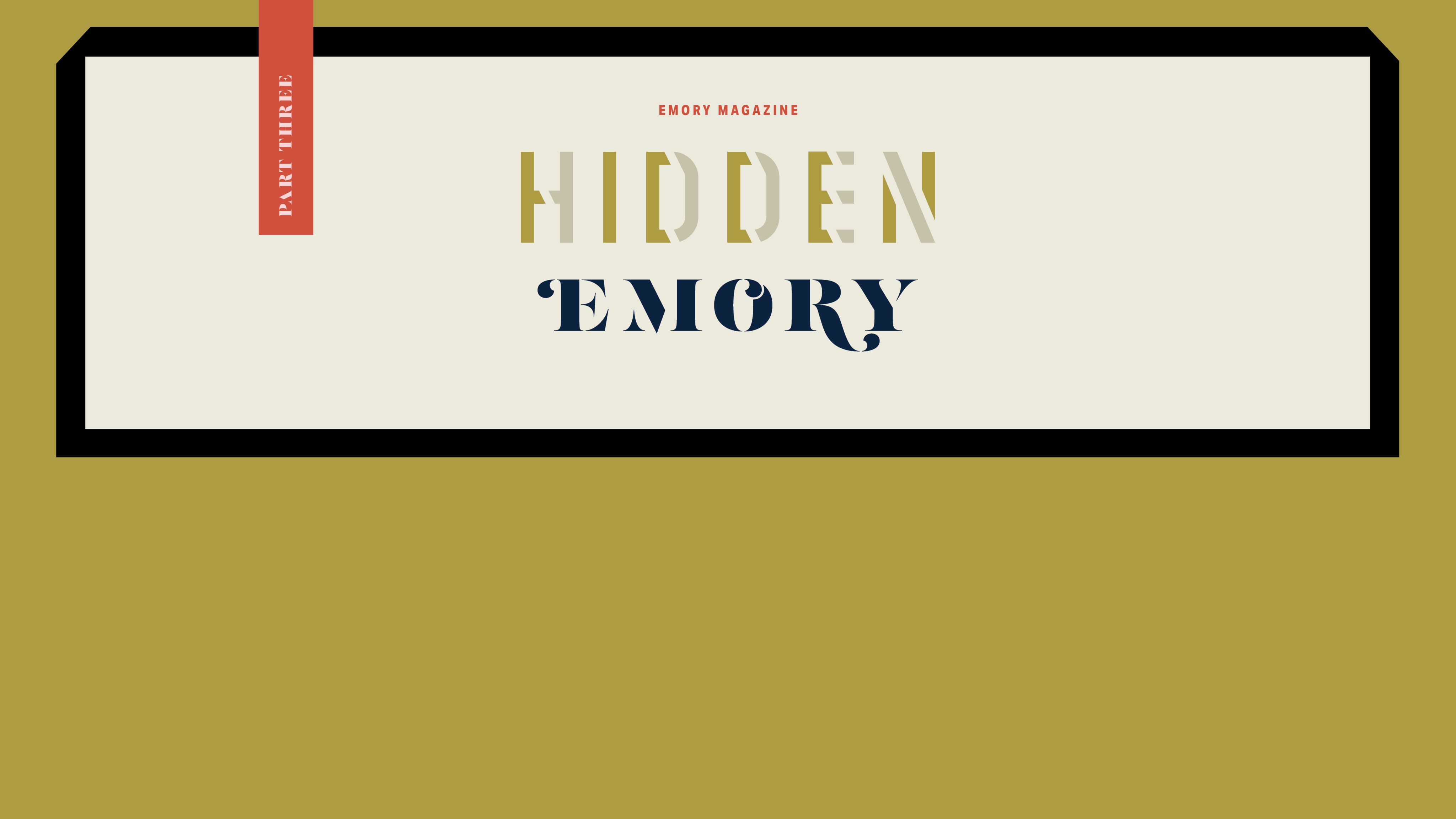
EMORY MAGAZINE | SUMMER 2023
PART THREE IN THE SERIES
Overlooked spaces. Forgotten places. Little-known objects and obscure artifacts.
In this third installment of our ongoing photographic series, Emory Magazine looks at the Medical Science History Mosaic that looms large inside the lobby of the Woodruff Health Sciences Administration Building.
Photographs by Kay Hinton
Text by Roger Slavens
Design by Elizabeth Hautau Karp
Measuring 66 feet long and three stories high, the enormous Medical Science History mosaic — the creation of Italian-born artist Sirio Tonelli — remains largely known only to those who have stepped inside the Woodruff Health Sciences Center Administration Building (WHSCAB) on Emory’s Atlanta campus. The mural, originally titled “Medicine Through the Ages: A Mosaic” and officially unveiled in 1996, boasts more than 2.5 million small tiles that stunningly convey a broad swath of medical history, including depictions of more than 30 key historical figures and events across this towering work of art.
Tonelli, considered a master Byzantine iconographer, has created mosaics, frescoes, stained glass windows and designs in marble, bronze and wood that grace the interiors of more than 100 churches and other buildings throughout the United States. His mural was commissioned by Emory and installed in 1996, thanks in part to the championing efforts of John Skandalakis (1920-2009), the university’s director of the Centers for Surgical Anatomy and Technique. Skandalakis knew of Tonelli through the artist’s work on Atlanta’s Greek Orthodox Cathedral and helped bring his artistic vision to Emory, where he adapted his classical style and techniques to help visualize the historical mission of Woodruff Health Sciences.
The mosaic, located in the lobby of WHSCAB at 1440 Clifton Road, can be viewed by the general public during normal weekday hours.
The Medical Science History mosaic contains 33 colorful panels that span more than 12,000 years of innovation, dating all the way back to 10,000 BCE.
Panel 2 depicts the Eqpytian Imhotep (2900 BCE), widely considered to be the world's first known physician.
Panel 3 showcases Hippocrates (c. 460 BCE-c. 377 BCE), an early Greek physician known as the “father of medicine.”
In part of panel 3, recalling Hippocrates’ time, a Greek soldier’s wounded arm is bandaged after battle.
Panel 4 highlights the work of Galen (AD 131-c. AD 200), a Greek physician, physiologist, and writer who made important contributions to anatomy. Panel 5 jumps back. in time to the advent of ancient Chinese medicine (c. 2700 BCE), which was based on the competing doctrines of Yin-Yang dualism and the theory of five phases.
Fast forward to panel 9, and here we see Benjamin Rush (1745-1813), a prominent American physician and teacher who made lasting contributions to psychiatry. In panel 10, French physician René Laennec (1781-1826), is remembered for inventing the stethoscope.
In panel 11, Rhazes (c. 850-c. 932), Persia’s first physician, wrote a learned synthesis of medical thought. In panel 12, Moses Maimonides (1138-1204), a rabbi and philosopher, was the greatest Jewish physician of his day. Panel 13 showcases Crawford W. Long (1815-1878), who in 1842 became the first physician to use ether as an anesthetic. In panel 14, Edward Jenner (1749-1823) is depicted for his discovery of the vaccination for smallpox.
In panel 19, Giovanni Battista Morgagni (1682-1771) of Italy has been called the father of pathologic anatomy.
In panel 20, Elizabeth Blackwell (1831-1910) is singled out for being the first woman to graduate from a U.S. medical school. Panel 21 depicts Robert Koch (1843-1910), who proved the bacterial cause of disease through the study of tuberculosis. In panel 22, Charles Drew (1904-1950) perfected the science of blood transfusion. And in panel 23, Sir William Osler (1849-1919), author of the standard medical text of his day, was regarded by his colleagues as the complete physician because of his teachings, writings, and practice of medicine.
Panel 25 shows Louis Pasteur (1822-1895), who developed pasteurization and did pioneering work in bacteriology. In panel 26, Ignaz Semmelweis (1818-1865) and Oliver Wendell Holmes (1809-1894) developed practices to prevent puerperal fever. In panel 27, Joseph Lister (1827-1912) was the father of antisepsis. And in panel 28, Wilhelm Konrad Roentgen (1845-1923) discovered x-rays.
Want to know more?
Please visit Emory Magazine, Emory News Center, and Emory University.

